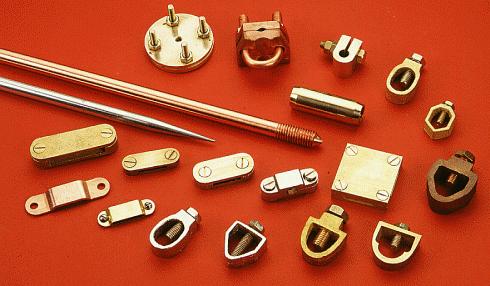Introduction:
Concerns are often raised when needing to run a supply to an outbuilding where the main premises utilises a Protective Multiple Earth (PME) earthing facility.
In general, BS 7671 permits the use of a PME earthing facility to such an outbuilding. Where there are no extraneous-conductive-parts present, there is no requirement for main protective bonding to be provided in the outbuilding. However, where there are extraneous-conductive-parts such as metallic services or metallic structural parts, main protective bonding must be provided for these parts.
The risks associated with a PME supply
In a PME earthing arrangement the supply neutral conductor is connected to earth at the source, and at regular intervals along its route via multiple earth electrodes. Therefore, the fault return path for both line-earth and line-neutral faults is via the combined conductor. This method provides a low-impedance return path along the PEN conductor allowing for rapid disconnection of overcurrent protective devices under fault conditions.
Example:
Supplies to an outbuilding via steel-wire armoured cable
An outbuilding supplied from the origin in the main building via a 6 mm2 two-core steel-wire armoured (SWA) cable having copper conductors and 90 °C thermosetting insulation, clipped direct. The cable is protected by a 32 A Type-B circuit-breaker. The conductor size was chosen to address any potential voltage drop issues.
Adequacy of armour to serve as the circuit protective conductor
If the armour of the SWA is to be used as a circuit protective conductor (cpc), its csa should satisfy the requirements for a protective conductor using either the adiabatic equation given in Regulation.
Summary
When conduit is used it is necessary to determine the maximum number of cables that can be drawn in to ensure there is sufficient free space remaining to prevent overheating. There are two methods of achieving this; one uses the unit system method, which relies on using cable factor tables, the second involves verifying that the area occupied by the cables does not exceed 35 % of the internal area of the conduit.
LED drivers
An LED driver is a self-contained power supply whose output is typically matched to the electrical characteristics of the LED(s) it is supplying. However, the stability of the LED and associated driver is likely to be dependent upon the method of installation, including the ability to dissipate heat and the circuit configuration for the type of LEDs, which may be constant current or constant voltage.
Three fold Electrical
Using one core of 6mm 3 core swa in parallel with the 36mm of steel wire armour is more than equivalent to the 10mm bonding requirements. I’ve never used this method but I wonder would this satisfy the requirements. What do you guys think?


